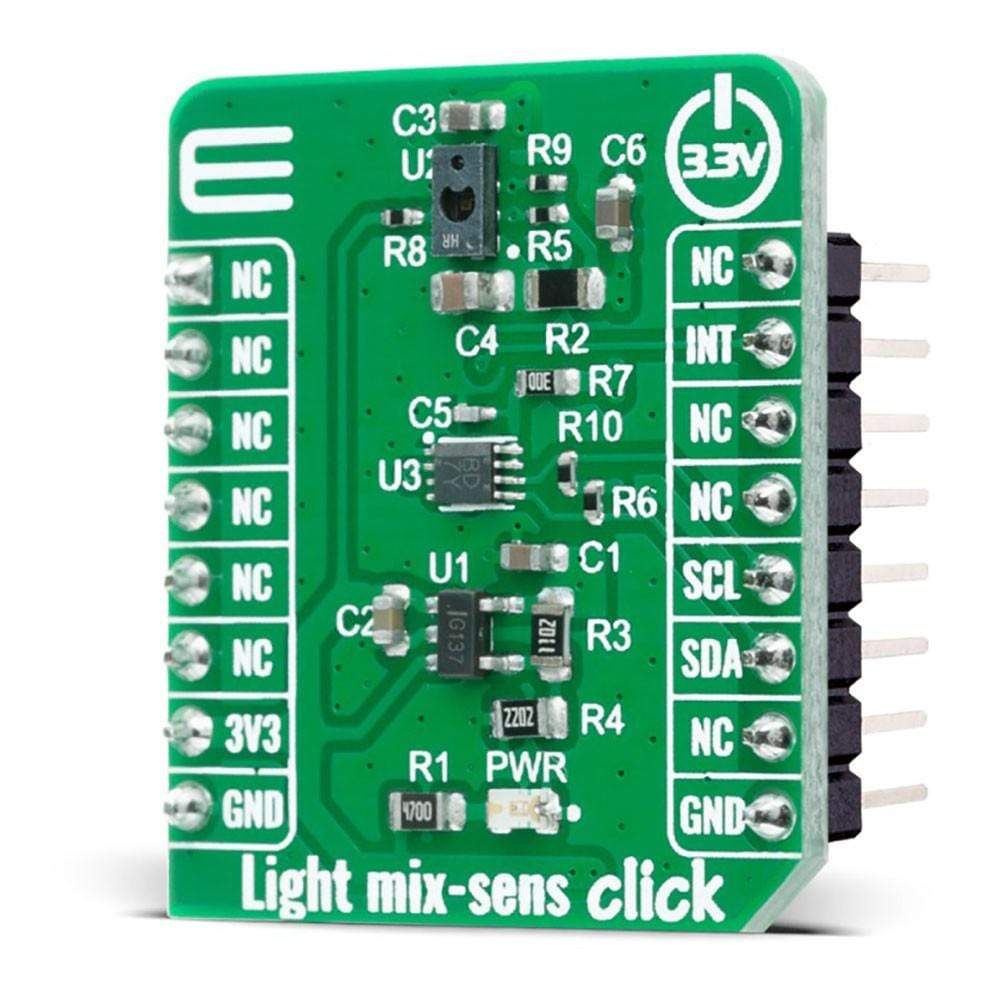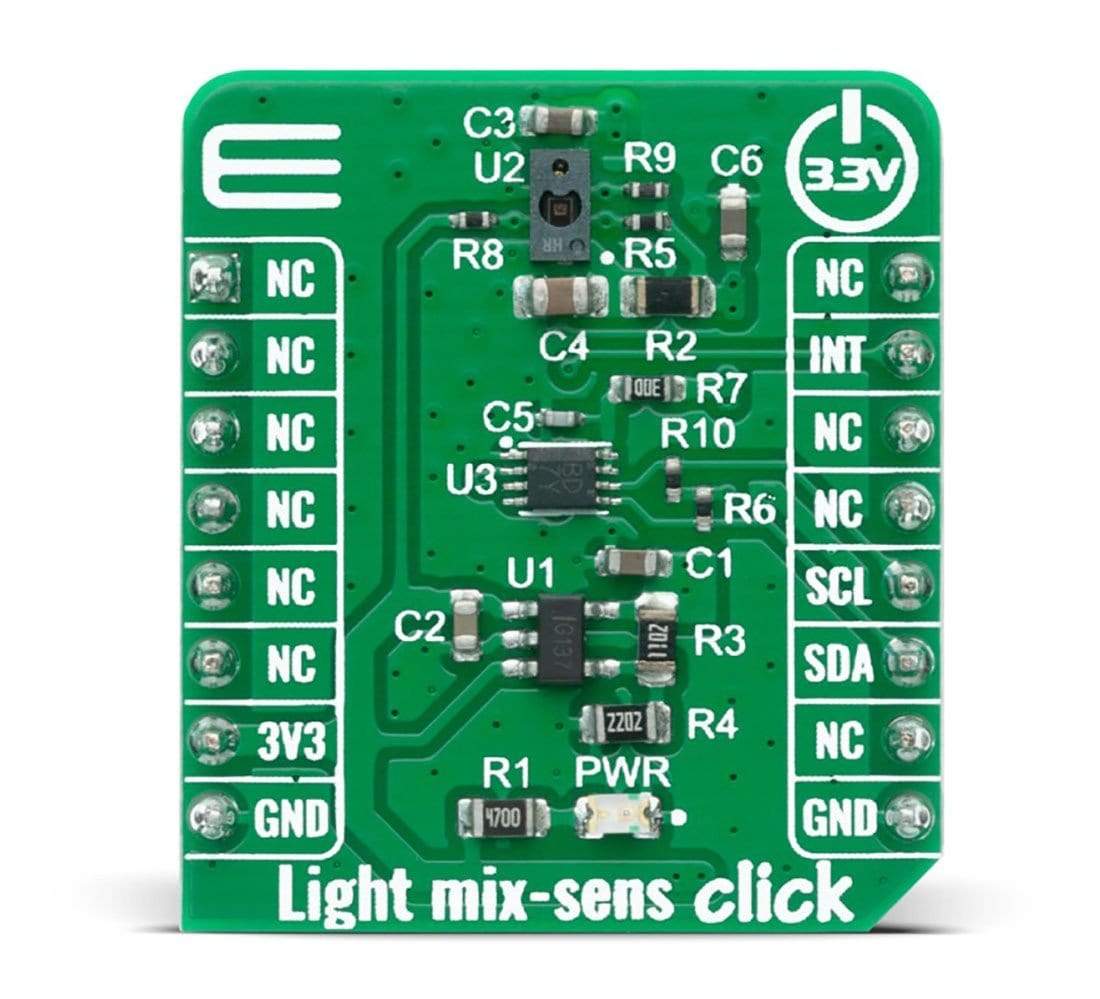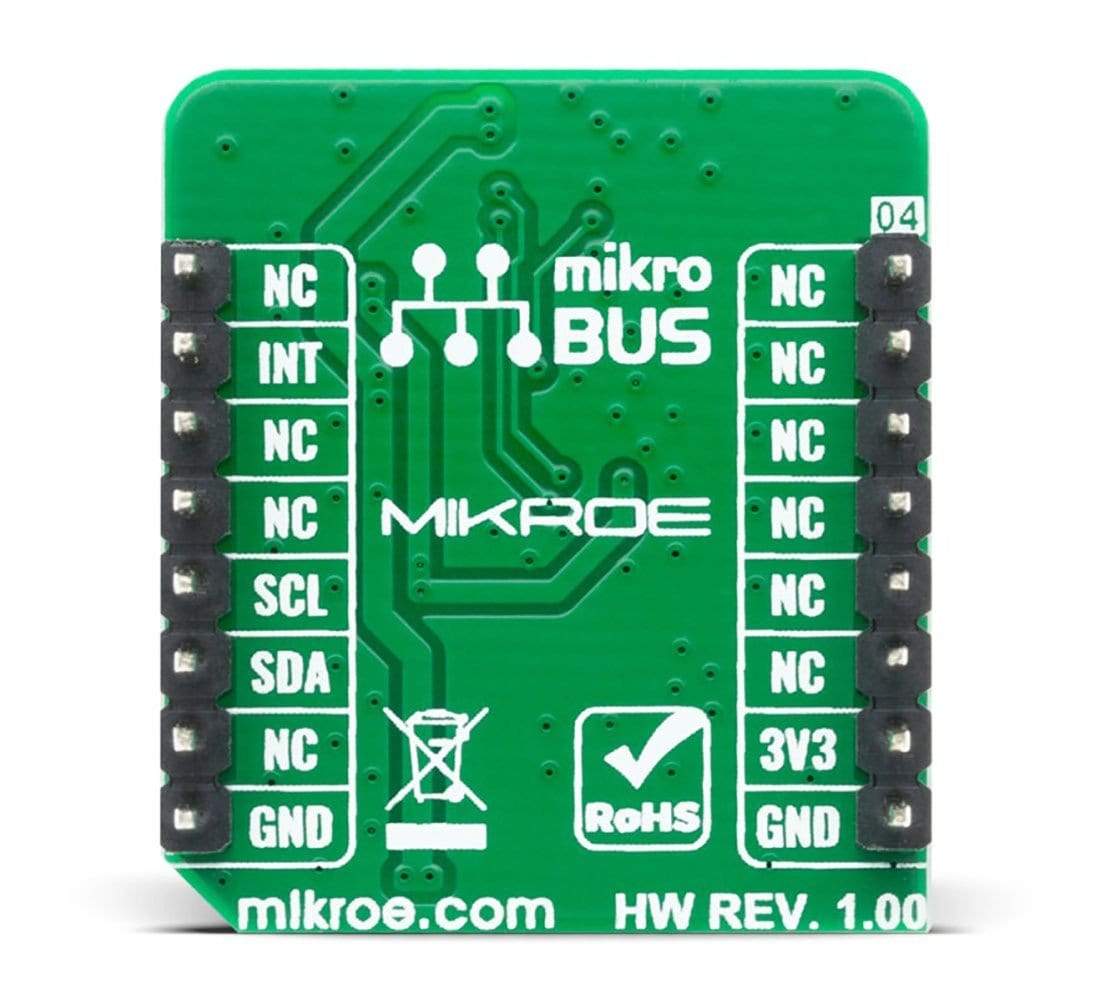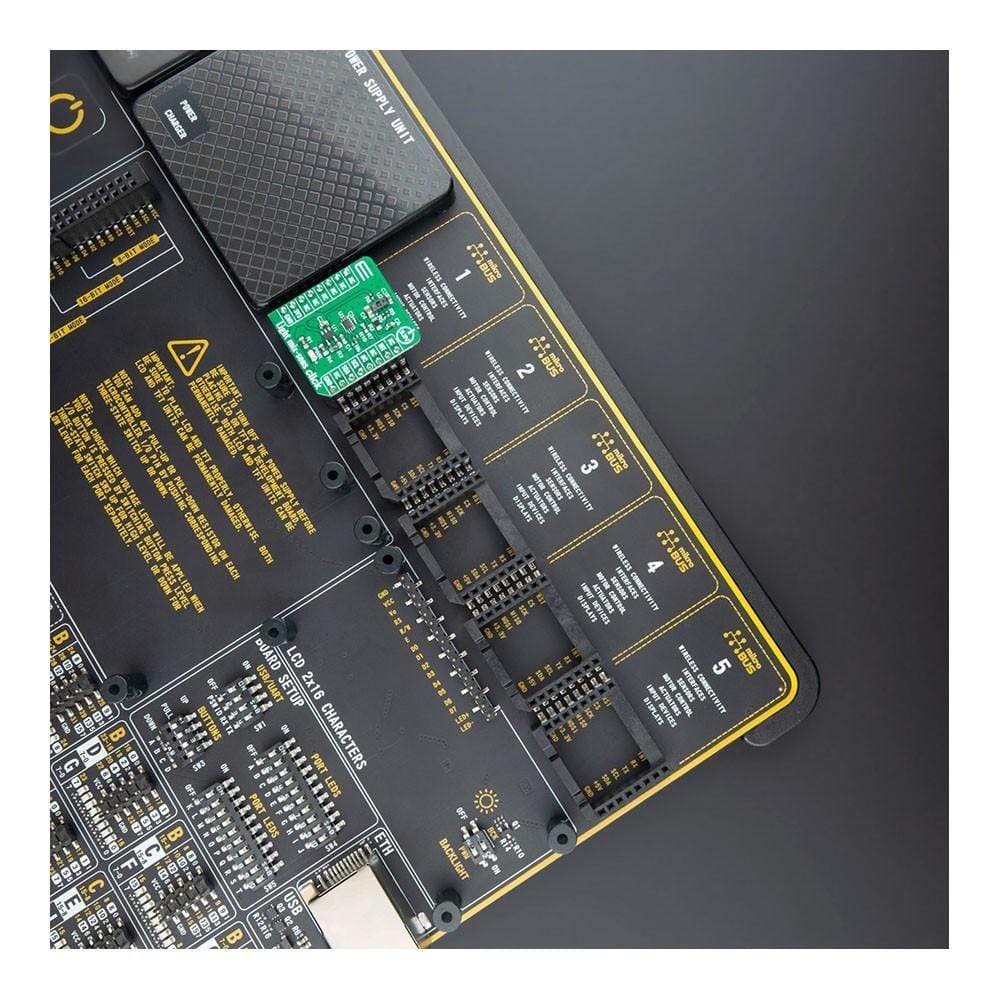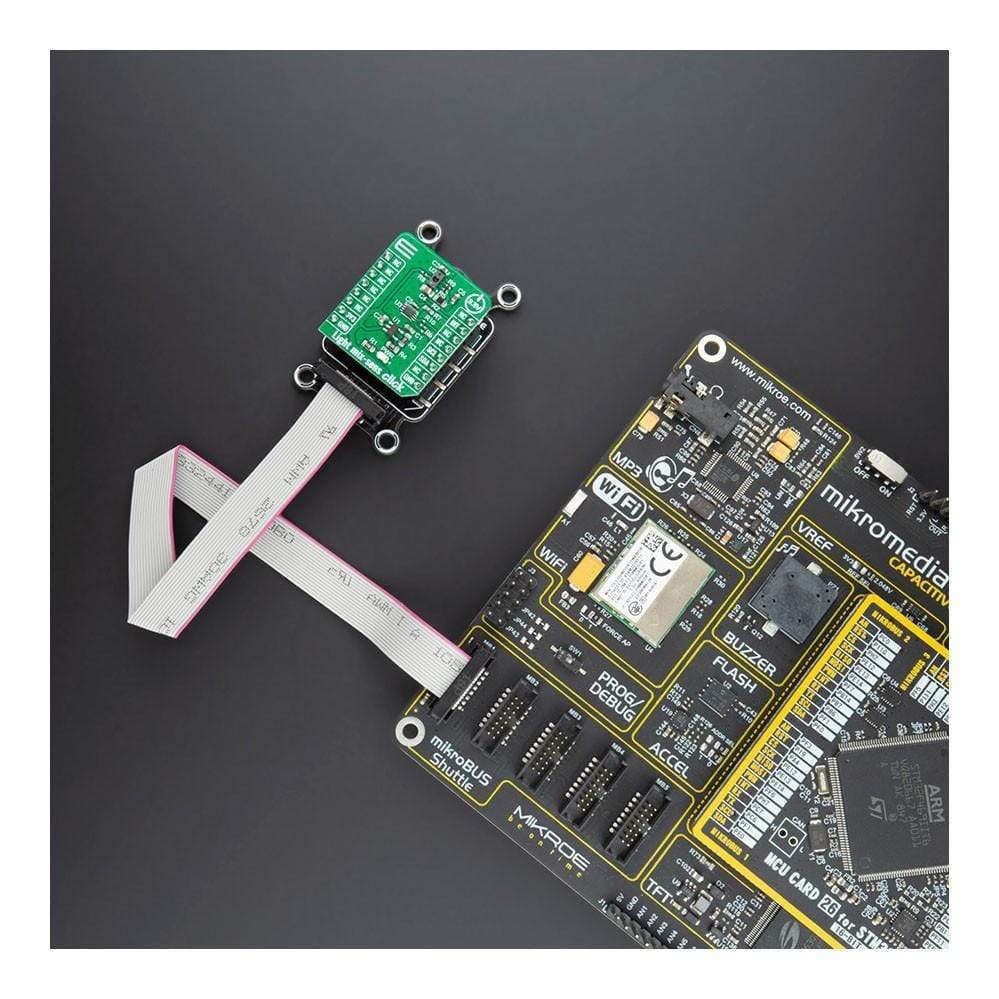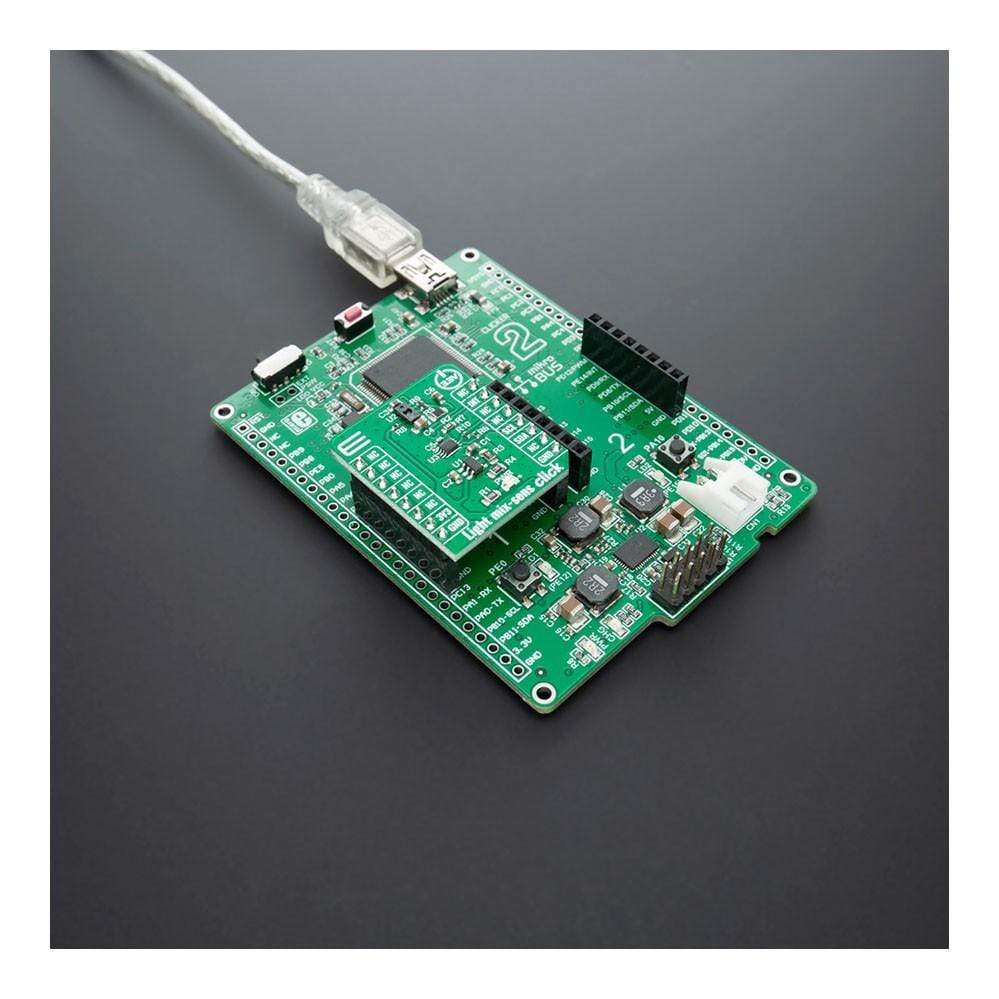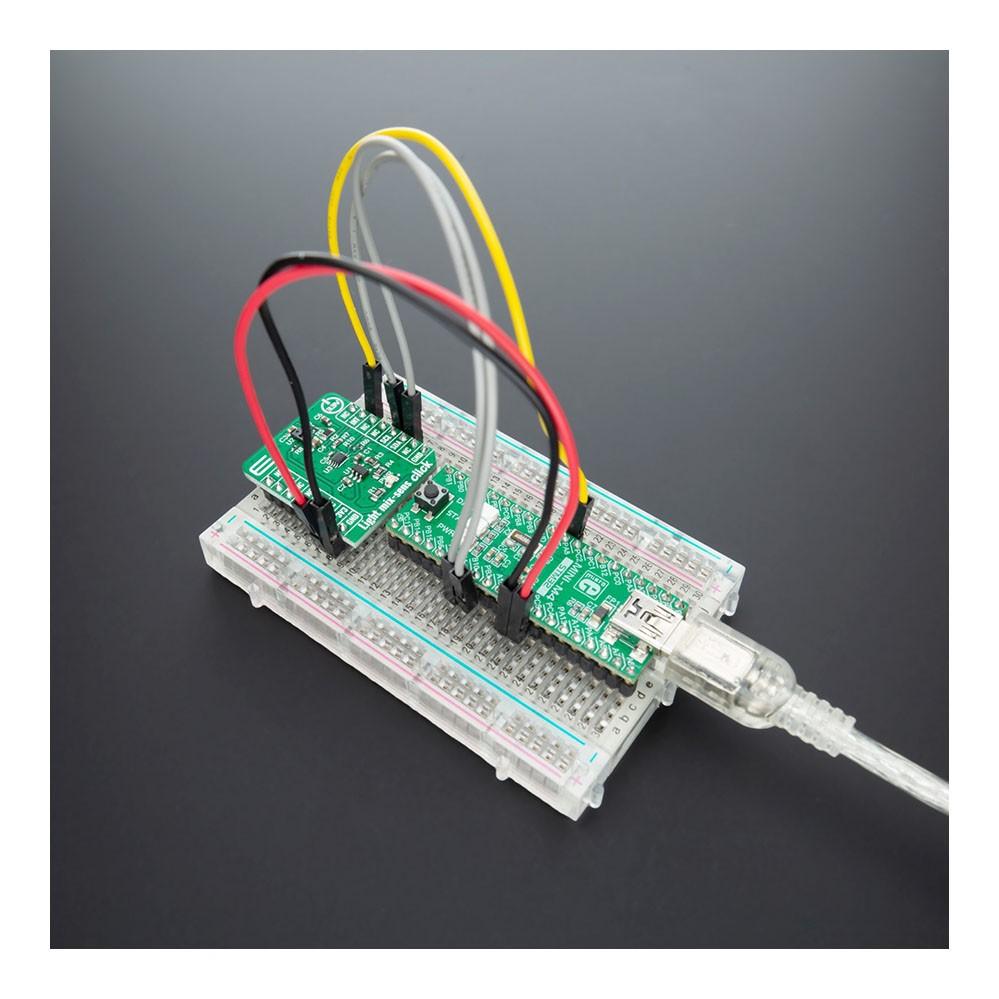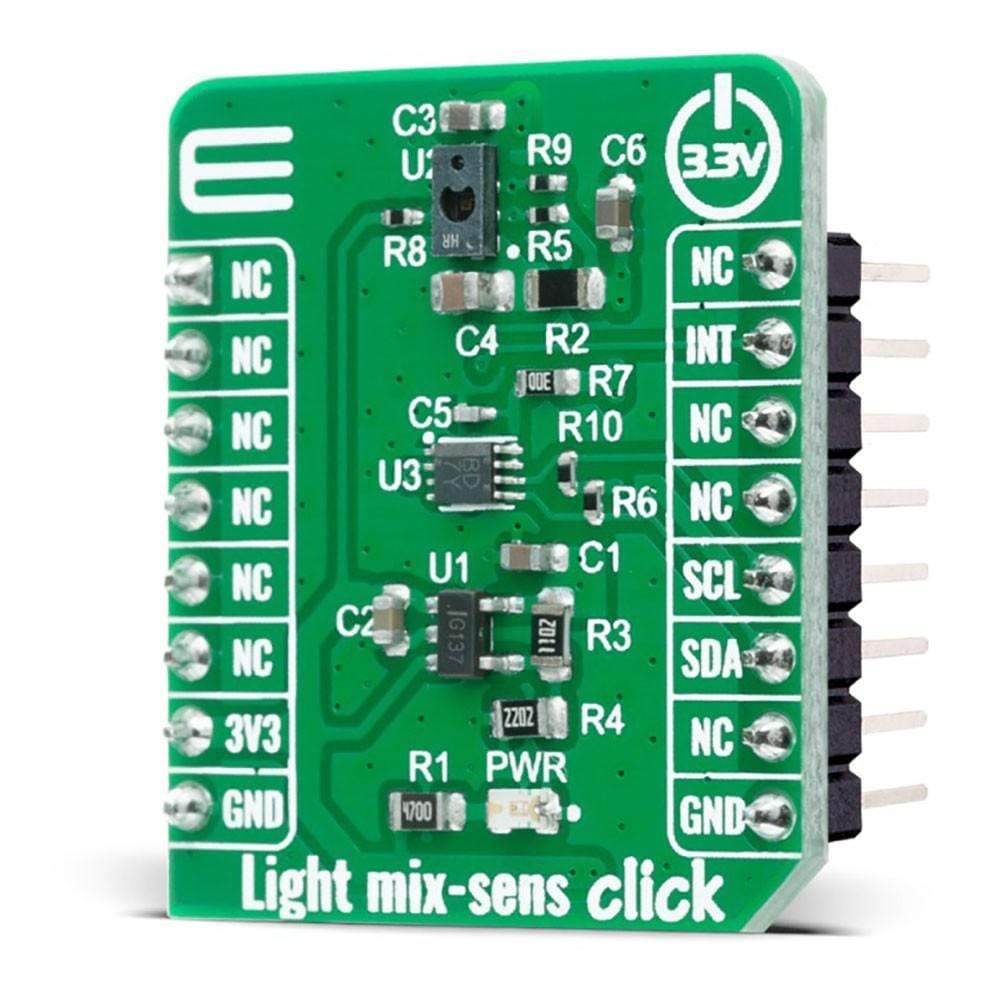
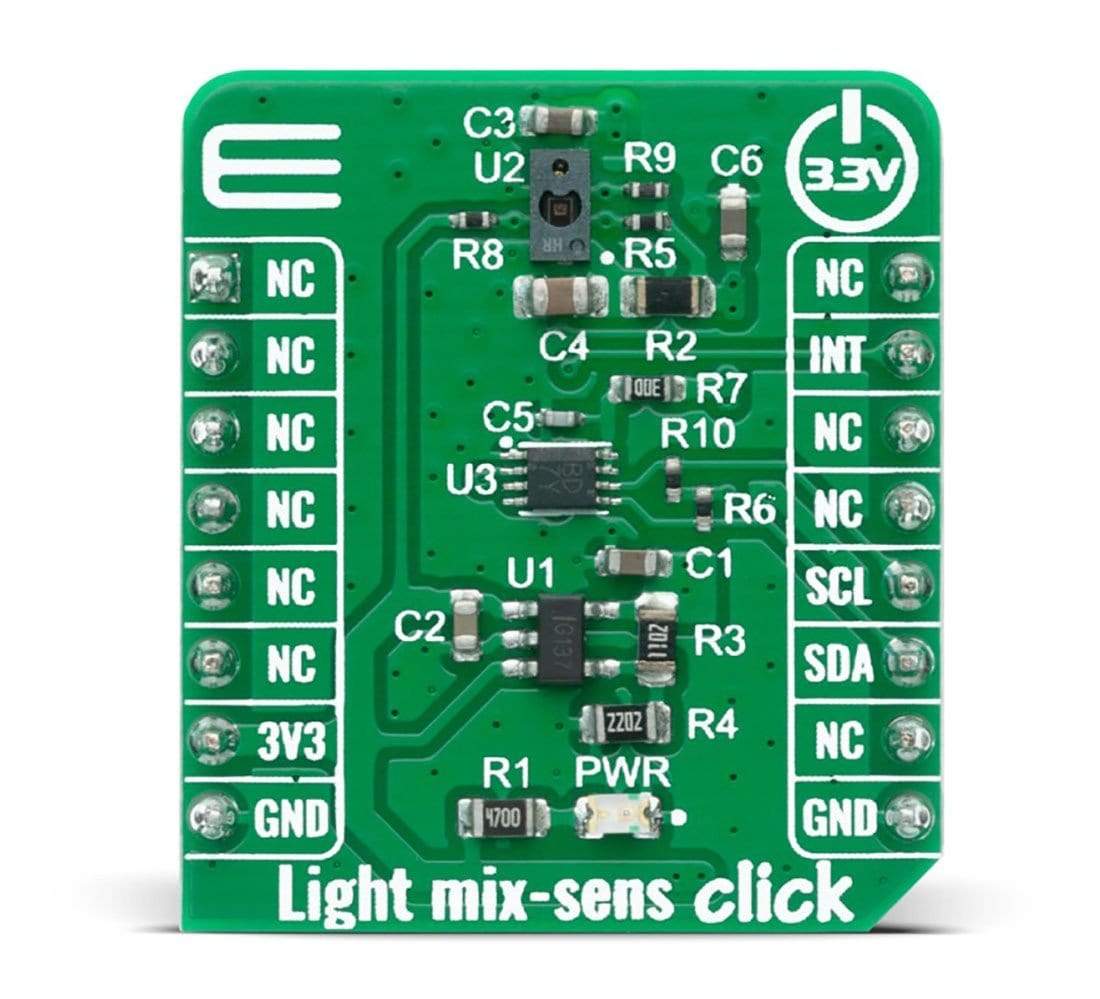
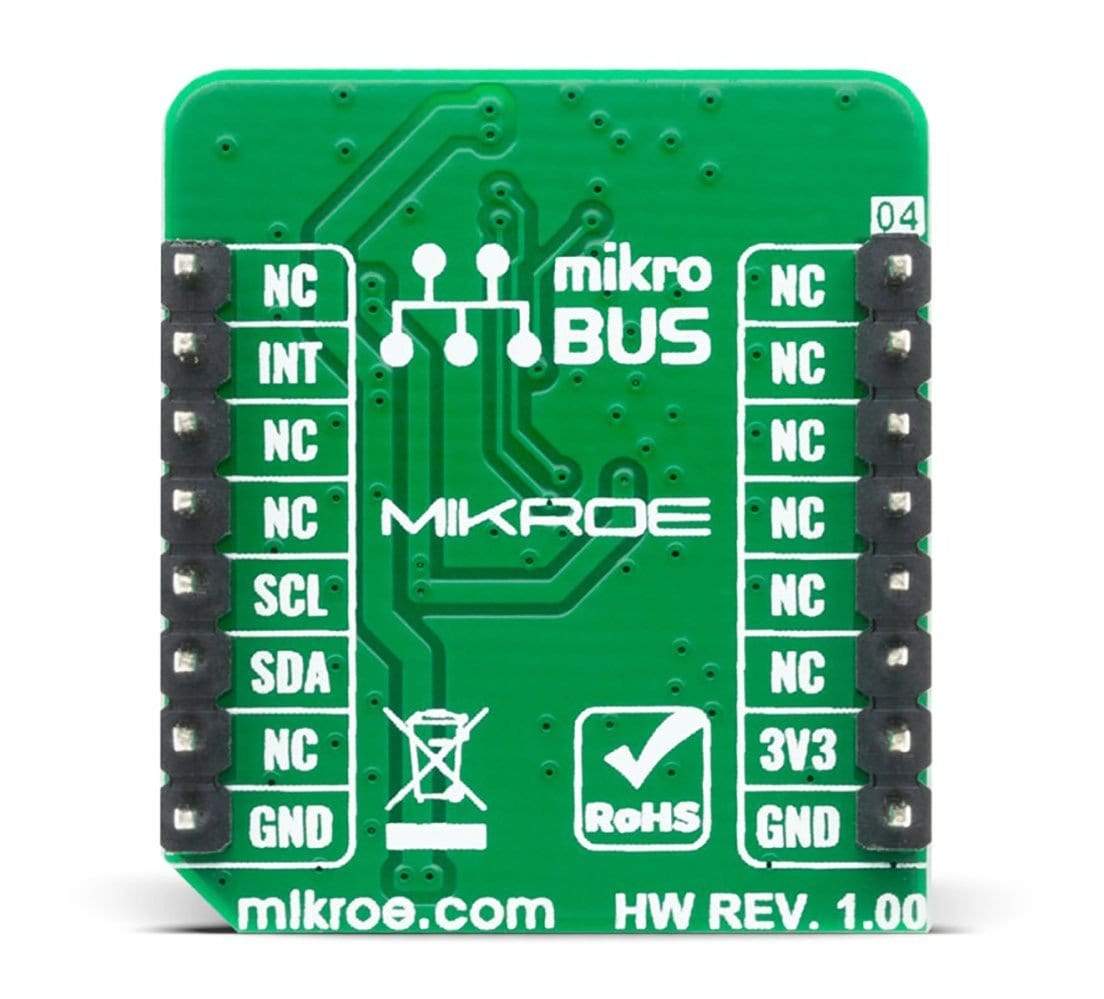
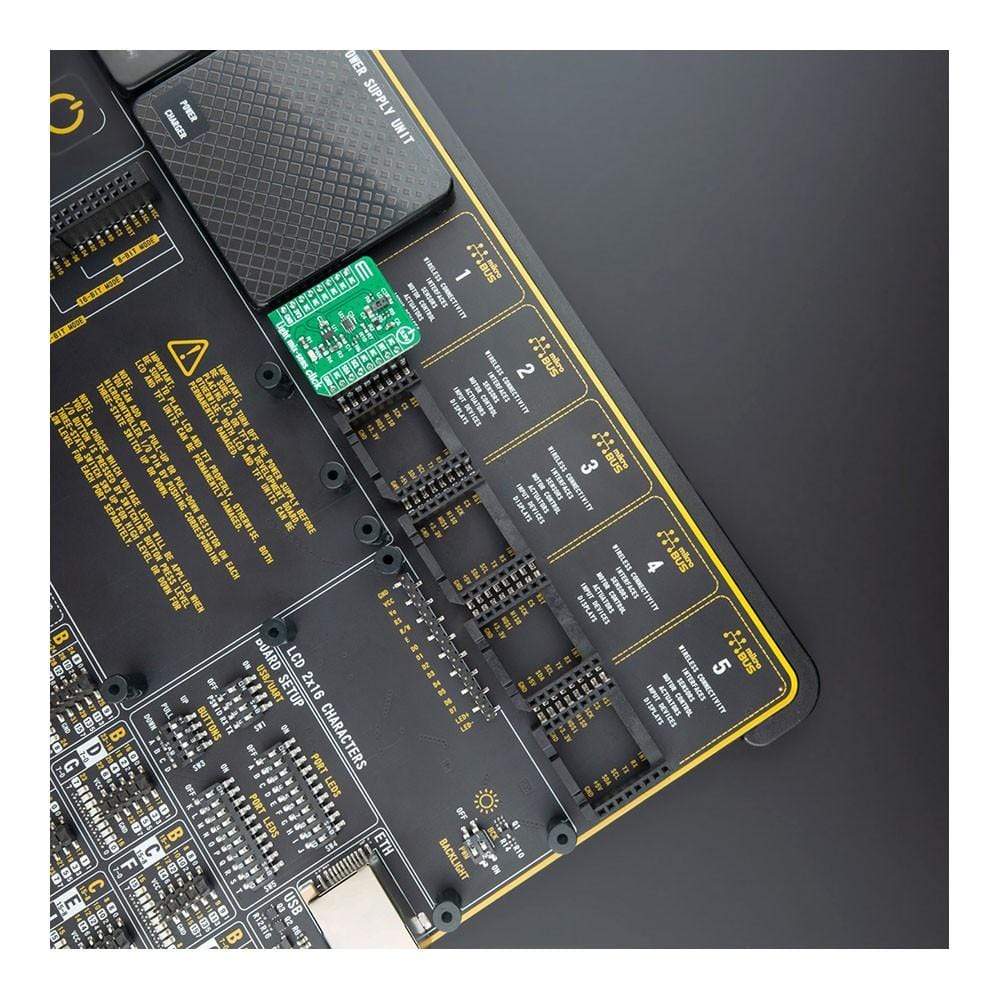
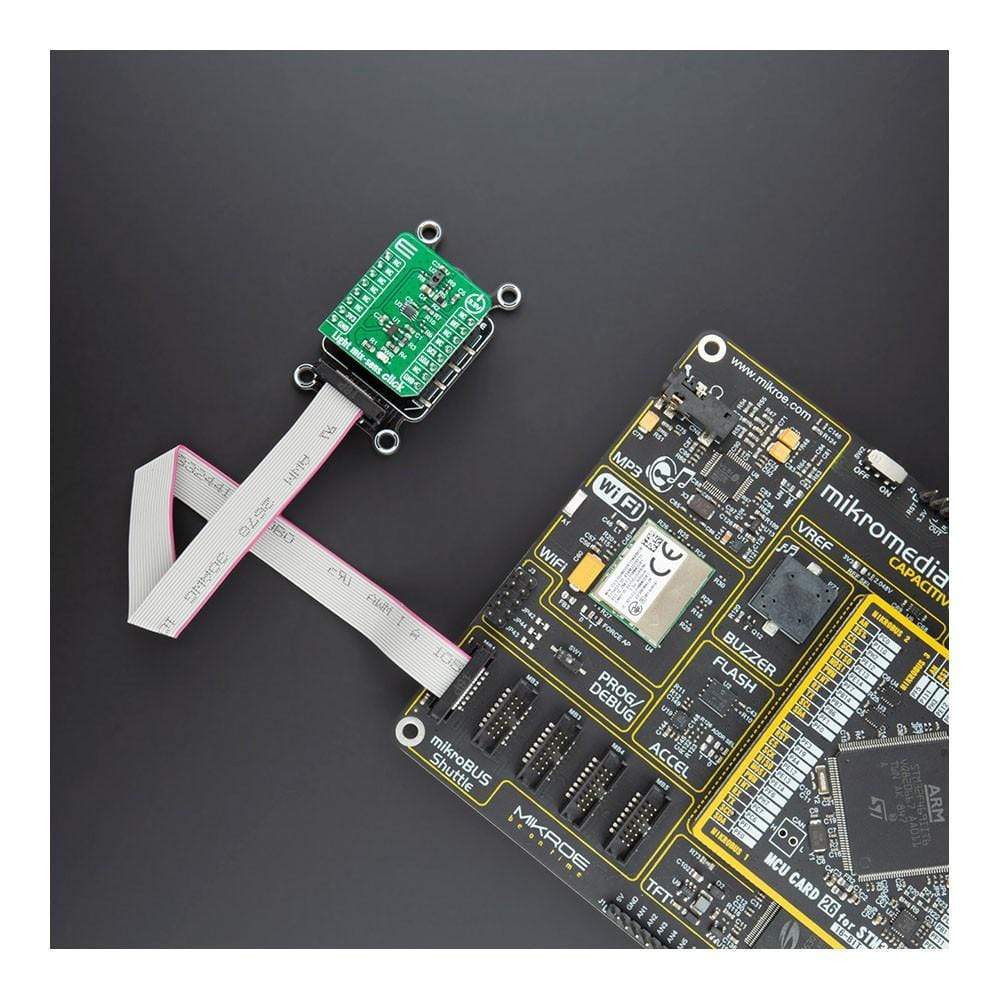
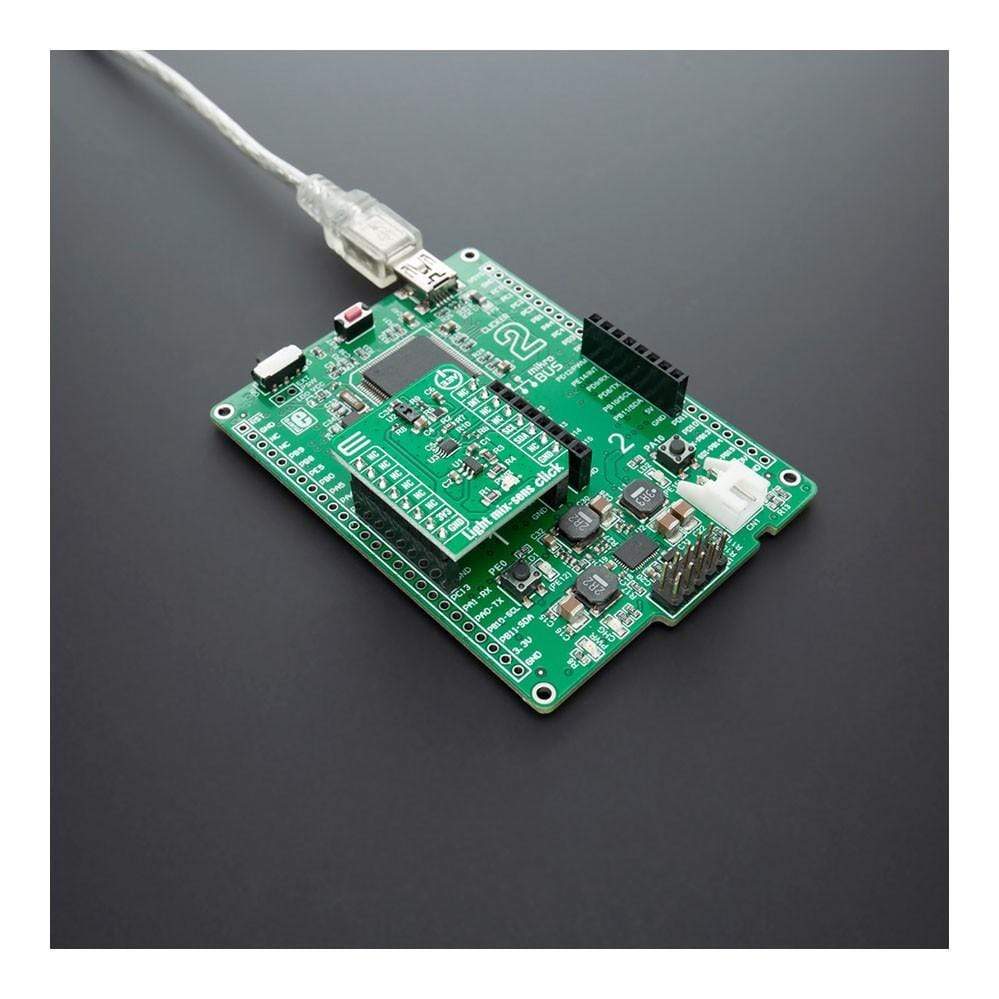
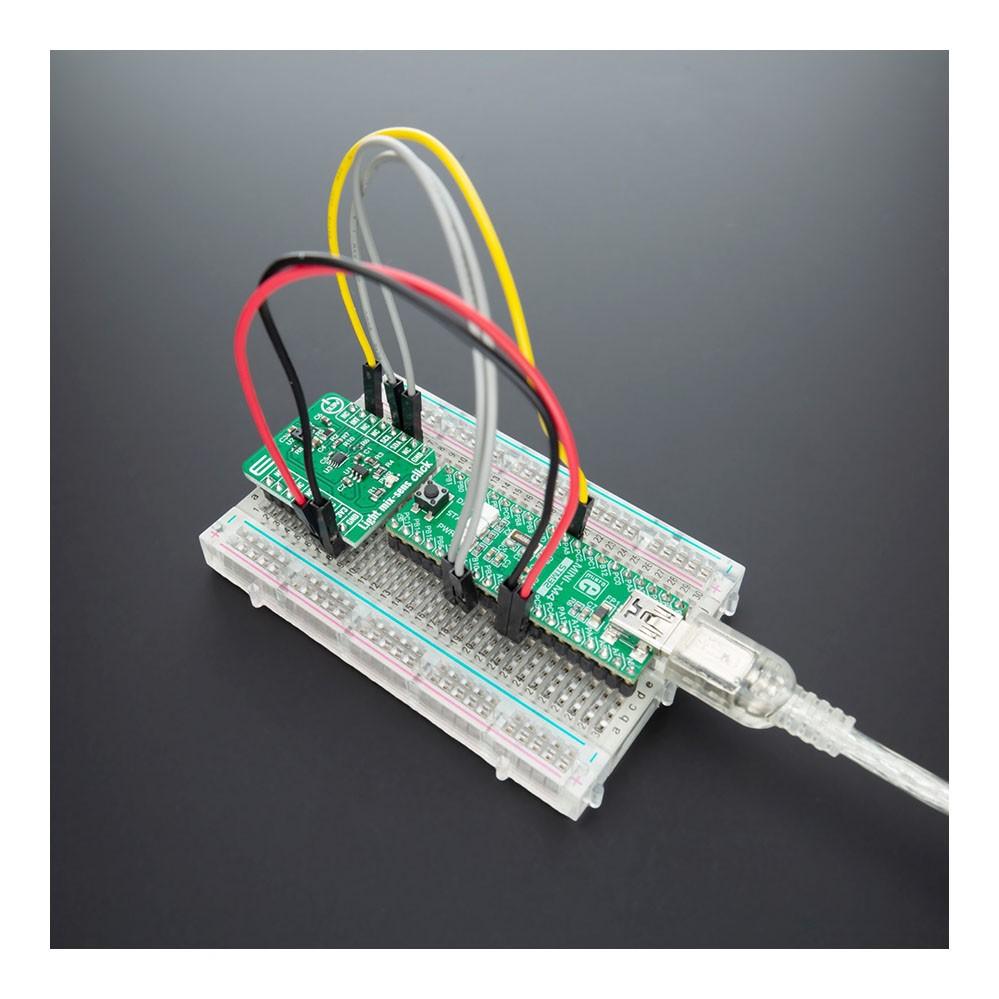
Overview
The Light Mix-Sens Click Board™ is based on the TMD37253, an advanced proximity measurement, colour sense (RGBC+IR), and digital ambient light sensing (ALS) device. The TMD37253 slim module package has been designed to accommodate a “single hole” aperture approach incorporating an IR LED and factory-calibrated LED driver.
The proximity detection feature provides object detection (e.g., mobile device screen to the user’s ear) by photodiode detection of reflected IR energy (sourced by the integrated LED). The ALS detection feature provides photopic light intensity data. The colour photo-diodes have UV and IR blocking filters and dedicated data converters producing 16-bit data. This architecture allows applications to accurately measure ambient light, enabling devices to calculate illuminance and colour temperature to control display backlight and chromaticity.
The Light Mix-Sens Click Board™ is supported by a mikroSDK compliant library, which includes functions that simplify software development. This Click Board™ comes as a thoroughly tested product, ready to be used on a system equipped with the mikroBUS™ socket.
Downloads
Le module Click Board™ Light Mix-Sens est basé sur le TMD37253, un dispositif avancé de mesure de proximité, de détection de couleur (RGBC+IR) et de détection numérique de la lumière ambiante (ALS). Le module mince TMD37253 a été conçu pour s'adapter à une approche d'ouverture à « trou unique » intégrant une LED IR et un pilote de LED calibré en usine.
La fonction de détection de proximité permet de détecter un objet (par exemple, l'écran d'un appareil mobile à l'oreille de l'utilisateur) par détection par photodiode de l'énergie IR réfléchie (provenant de la LED intégrée). La fonction de détection ALS fournit des données d'intensité lumineuse photopique. Les photodiodes couleur sont dotées de filtres de blocage UV et IR et de convertisseurs de données dédiés produisant des données 16 bits. Cette architecture permet aux applications de mesurer avec précision la lumière ambiante, ce qui permet aux appareils de calculer l'éclairement et la température de couleur pour contrôler le rétroéclairage et la chromaticité de l'écran.
Le Le Light Mix-Sens Click Board™ est pris en charge par une bibliothèque compatible mikroSDK, qui comprend des fonctions qui simplifient le développement logiciel. Ce Click Board™ est un produit entièrement testé, prêt à être utilisé sur un système équipé du socket mikroBUS™.
| General Information | |
|---|---|
Part Number (SKU) |
MIKROE-4148
|
Manufacturer |
|
| Physical and Mechanical | |
Weight |
0.015 kg
|
| Other | |
Country of Origin |
|
HS Code Customs Tariff code
|
|
EAN |
8606018717927
|
Warranty |
|
Frequently Asked Questions
Have a Question?
Be the first to ask a question about this.

